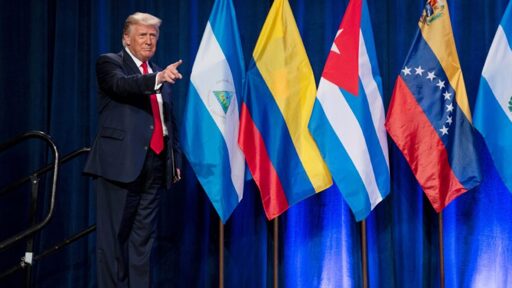- cross-posted to:
- [email protected]
- cross-posted to:
- [email protected]
cross-posted from: https://hexbear.net/post/4526125
In an op-ed for the Wall Street Journal shortly after being sworn in as Donald Trump’s Secretary of State, Marco Rubio, speaking to the “America’s First” policy of the new administration, emphasized the necessity for the U.S. to pay “closer attention to our own neighborhood,” namely the Western Hemisphere. Almost two months into Trump’s second presidential term, from his cabinet picks, to the threat of tariffs and attacks on immigration, and to the promises of recapturing the Panama Canal, that much is self-evident.
Amid the growing crisis of U.S. hegemony and the return of great power conflict, Trump touted his policy of “Peace Through Strength” as the answer for the woes facing U.S. imperialism, on the campaign trail and while in office. Far from the shoring up of a post-WWII order shaped and led by U.S.-led multilateralism that Joe Biden so desperately wanted to revive after Trump’s first term, Trump’s return to office has been marked by his doubling down on a go-it-alone policy for the country. Saying that he is the best “dealmaker” for the U.S., Trump’s “art of the deal” has relied on leveraging the great power of U.S. capital to reassert U.S. dominance.
Nowhere is this clearer than in Latin America, which Trump has deemed central to his foreign policy agenda. In the aforementioned op-ed, Rubio wrote that Trump’s “foreign policy agenda begins closer to home.” Giving color to Trump’s supposed vision, Rubio goes on to explain how the central task of shoring up U.S. hegemony requires lining up the countries of Latin America which they see as “long neglected” for decades — behind U.S. leadership. In other words, behind Trump’s America-first agenda for the hemisphere that is set to be the “Monroe Doctrine 2.0”.


